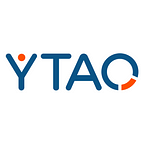The Best Things in Life are Sustainable and Simple!
The Key Steps Towards Ethical Fashion!
The fashion industry is founded on a revolving door of trends that encourages people to consistently update their wardrobes in order to stay relevant. For brands, this has meant needing to churn out trends at record speeds to meet the cardinal consumer demand — fast and cheap. While it may be perfectly affordable to buy new outfits on a daily basis over the years people have come to understand that fast fashion comes at a cost. In fact, in Australia, we reportedly send 85% of the textiles we buy to landfill every year.
Supply chain transparency is in fashion
There is a new sartorial trend set to hit the industry at large: transparent supply chains. That’s right; consumers are waking up to the reality that fast fashion comes at a cost. From the environmental impacts of manufacturing to sweatshops and overflowing landfill — a cheap outfit just isn’t worth the harm caused. Now a new breed of conscious consumer is demanding greater supply chain transparency and rallying around social causes like never before. The reality is that if your brand can’t keep up with this trend towards transparency and sustainability then you run the risk of being “cancelled”.
To evolve with the times and avoid growing scrutiny, brands must adopt new models and prioritise the wellbeing of people and the planet. A crucial part of this is cleaning up supply chains and the first step is certainly supply chain transparency. During a global pandemic with modern supply chains scattered across the globe this can seem near unmanageable to do, but progress is possible.
Here are the 2 key steps towards supply chain transparency in the Fashion Industry that ensure human rights are protected and consumers can trust your brand:
1. Being transparent — the good, the bad, and the ugly
Transparency must not be confused with an organisation partaking in a humble brag about its achievements. Being transparent is more than marketing; it is about identifying systematic issues across the entirety of a supply chain and sharing them publicly — the good, the bad and the ugly. The first step is an independent supply chain audit to identify existing issues across the entirety of the supply chain like exploitation, modern slavery, child labour, human trafficking, criminal activity and more.
Once a business has conducted an independent audit the next step is ensuring traceability of all suppliers. This means publishing details and information about manufacturers, processing facilities, mills and raw materials involved in the production of garments. This information must not only be shared internally or to key stakeholders but brands must risk scrutiny and go public. By publishing these details brand are being accountable and forthright about conditions. Traceability is crucially important because it helps the public to understand who is making their clothes and allows NGOs, journalists, unions and consumers to call out injustices when they occur and advocate for change where it is urgently needed.
It is not hyperbolic to say that traceability and cleaning up supply chains can literally save lives when you consider a horrific incident like the Rana Plaza building collapse in 2013. There are some brands leading the way when it comes to traceability, such as Nike and Patagonia, but with an incredible 93% of Australian labels not knowing the origins of raw fibre used in their fabrics and 61% companies not knowing where garments are made, there is a long road ahead.
2. Don’t just pledge, follow up with policies and commitments
The next crucial step beyond transparency is following up with actionable policies and commitments within an organisation and ensuring that these are implemented. In order to take positive action, a business must first understand the inherent problems that exist and listen to the lived experiences of workers and employees. Information and listening are essential. With that information brands must develop detailed policies and commitments that prioritise human rights, support worker wages, consider environmental impacts, sustainability and mitigate potential risks. It is important that policies factor in the facets of the supply chain and that they extend to every worker. It is also important to consider that plans are manageable and practical to implement — it is important to remember that this is a process that is constantly evaluating and evolving to be responsive to new risks, not a magical solution.
According to the COVID Fashion Report by Baptist World Aid, an important aspect is maintaining supplier commitments and ensuring that payment is flowing through the supply chain to workers wages: “Maintenance of regular payments to suppliers is critical to the effective functioning of a supply chain that protects the economic dignity of workers.”
Conclusion
Transparency will be an ongoing journey for many brands due to the complex nature of global supply chains but the cost of inaction is simply too high. In order to stop horrific human rights abuses and environmental disasters, the Fashion Industry needs to overhaul supply chains and make tangible commitments for the future. Consumers are demanding to know who made their clothes and are willing to boycott businesses that they cannot trust. In fact, 82% of Australian consumers say that want to see clothing companies pay workers fairly. All of this considered, the only trend that truly needs to be left in the past is fast fashion.
